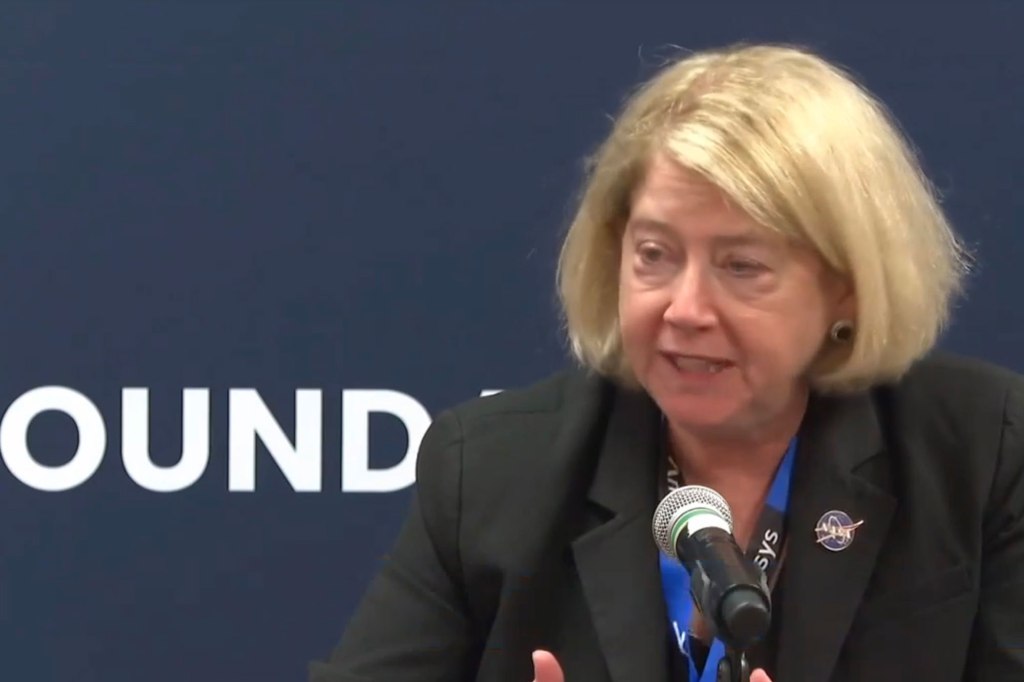Russian spacecraft, US satellite nearly collided in shockingly close call that ‘really scared’ NASA
A Russian satellite and a US satellite nearly collided at the end of February — and NASA is now revealing just how close the two spacecraft were to crashing in what could have been a life-threatening catastrophe.
The two satellites, which cannot be steered or maneuvered, passed with less than 10 meters — or roughly 30 feet — between them on Feb. 28 in a shocking moment that “really scared” experts at the space agency, NASA deputy administrator Pam Melroy said at a conference this week.
NASA knew that the defunct Russia spy satellite Cosmos 2221 and its own Thermosphere Ionosphere Mesosphere Energetics and Dynamics Mission (TIMED) spacecraft would orbit close to one another beforehand and was monitoring the situation with the Department of Defense.
But its scientists did not expect the two to miss one another by such a short distance.
“It was very shocking personally and for all of us at NASA,” Melroy said at the Space Foundation’s Space Symposium conference in Colorado Tuesday, according to The Telegraph.
“We recently learned that the path ended up being less than 10 meters apart — less than the distance of me to the front row,” she told the live audience.
Those 10 meters were the only thing between normalcy and a potentially deadly disaster, according to the former astronaut.
“Had the two satellites collided we would have seen debris generation, tiny shards traveling at 10,000 miles per hour, waiting to puncture a hole in another spacecraft and potentially putting human lives at risk,” Melroy said, according to the outlet.
“It’s kind of sobering to think that something that’s the size of the eraser on the end of your pencil could wreak such havoc – but it can. We’re all worried about this,” she said. “TIMED really scared us.”
Near misses and potential collisions are becoming a growing issue as traffic in space increases with new technology companies like Elon Musk’s SpaceX launching thousands of satellites into Earth’s orbit.
More than 10,000 satellites currently orbit Earth — a four-fold increase since 2019, according to the Telegraph.
And hundreds of thousands more are coming.
Across the globe, an estimated 400,000 satellites have been greenlit for launching into low Earth orbit with another 16,000 defunct and decaying satellites in orbit at any one time — creating a “monumental” issue, the publication reported.
“This problem is monumental. We can’t even agree on how many pieces of debris are in orbit because we have so many models out there,” Melory said.
Just one dead satellite that collides with another spacecraft could set off a disastrous chain reaction in Earth’s busy lower orbit space as debris from the wreckage could crash into other orbiting objects — similar to a car crash that leads to a multi-car pile-up on the highway — in a theory known as Kessler Syndrome.
NASA launched its Space Sustainability Strategy Tuesday to attempt to prevent such disasters by better mapping and monitoring of all satellites and debris in Earth’s orbit.
Several private companies are also developing technology to catch dying satellites and remove them from Earth’s orbit.
“Space is busy. We have been making it harder on ourselves and so NASA is putting a way forward that will make sure we do the right thing,” Melroy said.













